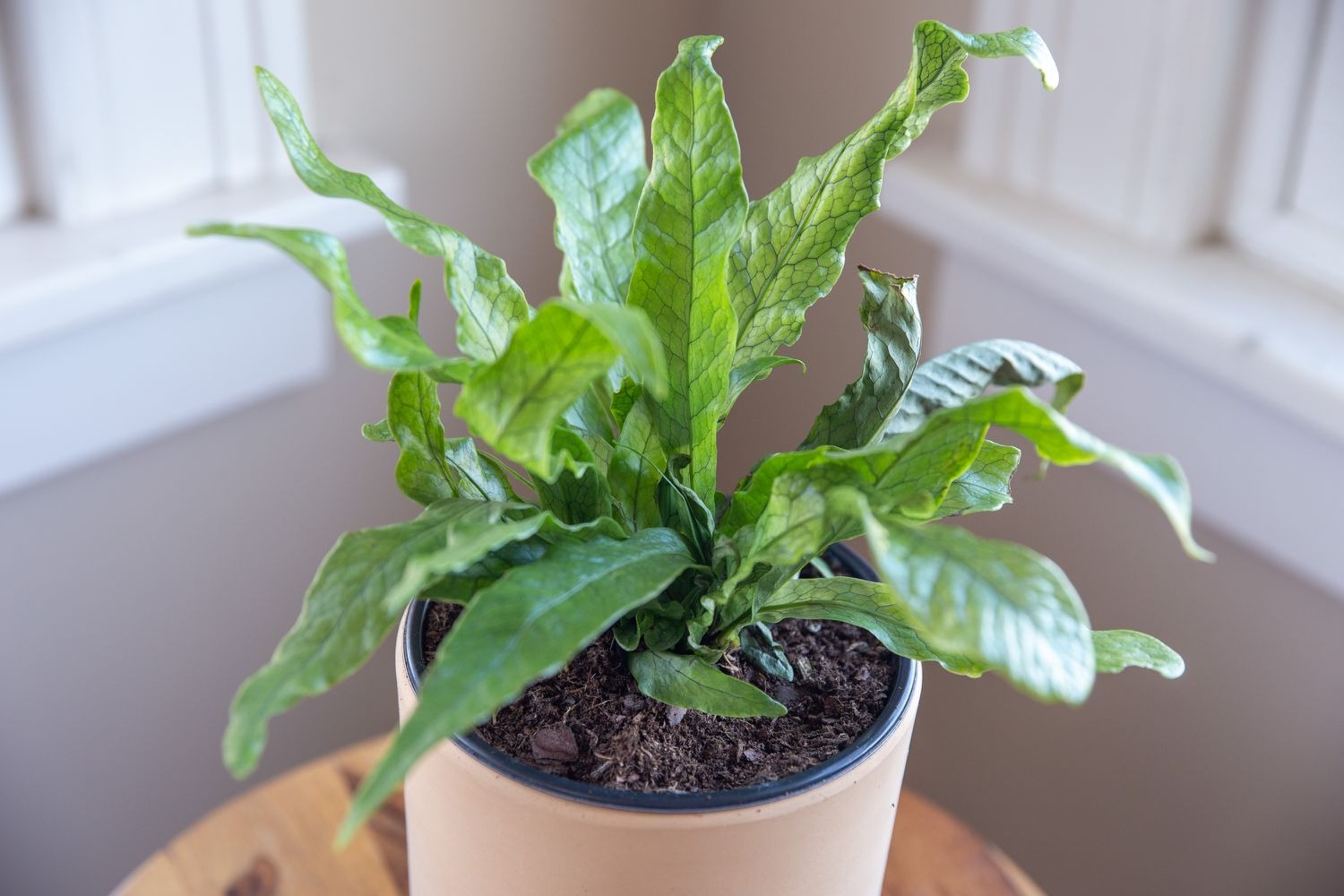The Crocodile Fern (Microsorum musifolium), also known as the Crocodyllus Fern or Alligator Fern, is an exotic and unusual houseplant. Native to tropical forests in Southeast Asia and Australia, this fern gets its name from its textured, leathery leaves that resemble crocodile skin.
With its vibrant green foliage and easy care requirements, the Crocodile Fern makes an excellent addition to any indoor plant collection. This plant can grow quite large, reaching heights of 2-5 feet, making it a standout feature in both homes and offices.
Let’s take a closer look at some key details about the Crocodile Fern:
| Botanical Name | Microsorum musifolium |
| Plant Family | Polypodiaceae |
| Common Name | Crocodile Fern, Crocodyllus Fern, Alligator Fern |
| Plant Type | Tropical Fern |
| Mature Size | 2-5 ft tall and wide |
| Growth Habit | Upright, Clumping |
| Foliage | Broad, strap-like fronds with crocodile skin texture |
| Sunlight | Bright indirect light |
| Soil | Well-draining, rich potting mix |
| USDA Zones | 9-11 (outdoors) |
| Exposure | Part sun to shade |
This attractive fern thrives in warm, humid environments reminiscent of its native Southeast Asian rainforests. With its shallow root system, the Crocodile Fern takes most of its moisture and nutrients from the air, making it an adaptable houseplant.
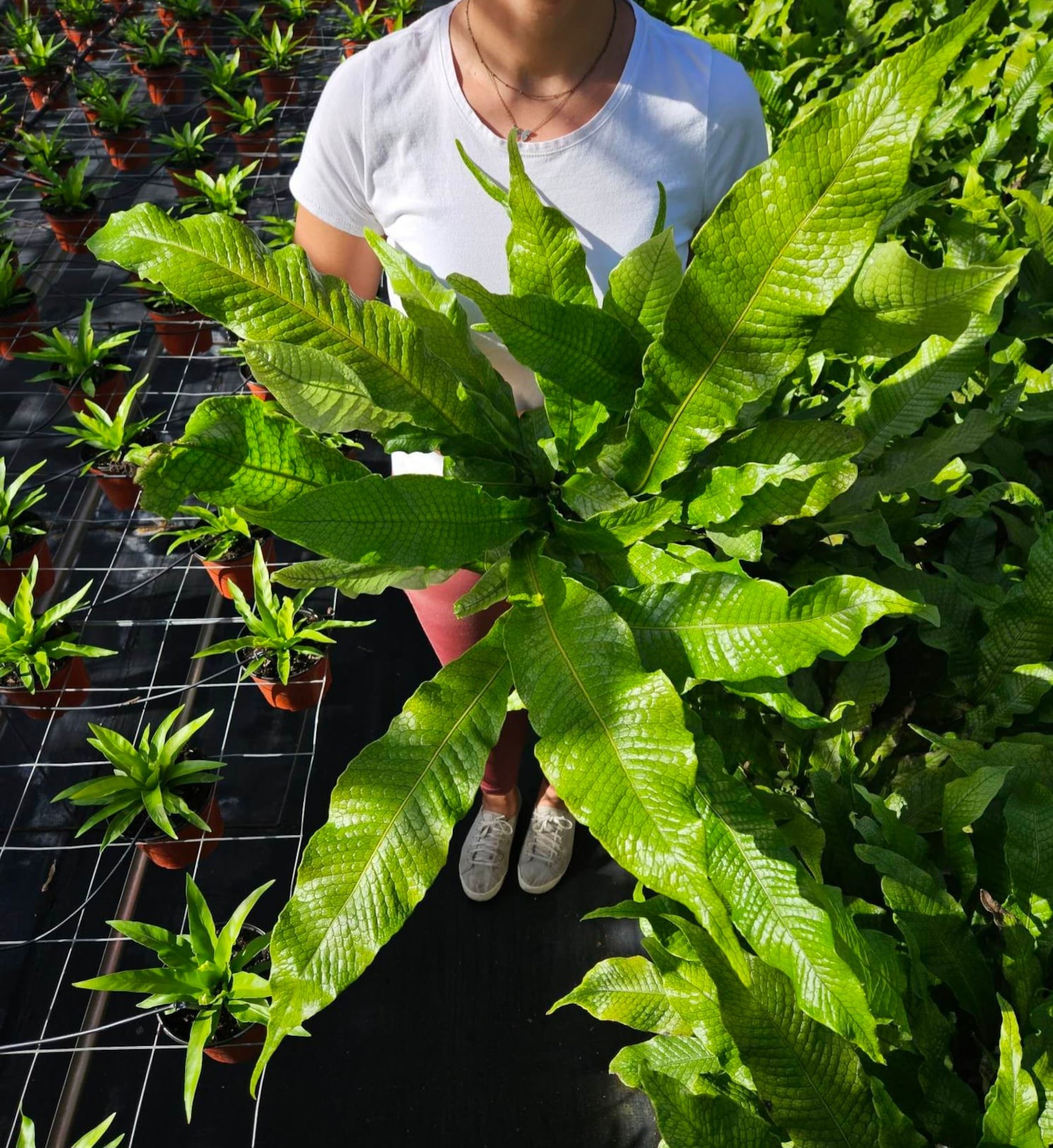
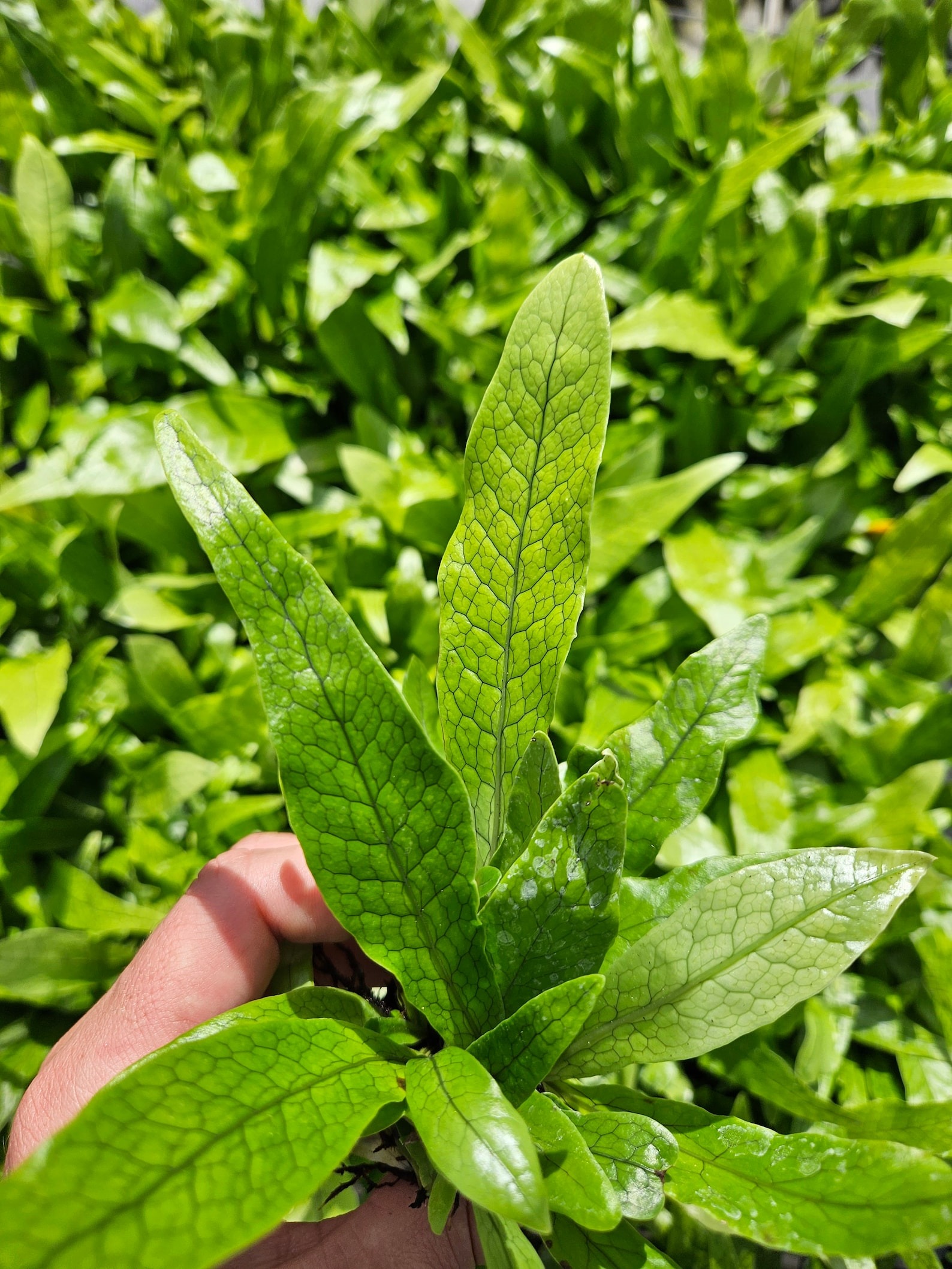
Crocodile Fern Care
Caring for a Crocodile Fern mainly involves providing consistent moisture through the soil and air, filtered sunlight, and warm temperatures. Here are the key elements this plant needs to stay healthy indoors:
Light
The Crocodile Fern does best in bright, indirect sunlight, similar to the dappled light it would receive growing under the rainforest canopy. Direct sun will scorch its sensitive fronds.
Place your Crocodile Fern near an east, west, or north-facing window where it will get ample ambient brightness but no harsh afternoon sun. Light levels can be adjusted with sheer curtains as needed.
Temperature and Humidity
As a tropical plant, the Crocodile Fern requires consistent warmth and appreciates humidity. Ideal temperatures are 65-80°F. Keep this fern away from cold drafts from windows or air conditioning vents.
Bathrooms and kitchens provide natural humidity that benefits this plant. Alternatively, use a pebble tray or humidifier to raise moisture levels. Mist the fronds every few days for an extra humidity boost.
Soil
A well-aerated, nutrient-rich potting mix provides the ideal foundation for Crocodile Fern. Look for a mix containing compost, peat moss, perlite or bark chips. The soil should retain some moisture but still drain well to prevent sogginess.
Water
Consistent soil moisture is key for Crocodile Fern. Water thoroughly whenever the top inch of soil becomes dry. Always empty any water that collects in the saucer so the roots don’t sit in standing water.
The fronds also benefit from regular misting. Wipe leaves dry after misting to prevent fungal leaf spot diseases. Reduce watering frequency in winter when growth slows.
Fertilizer
Feed Crocodile Fern with a balanced liquid fertilizer diluted to half strength. Fertilize monthly during the active growing period from spring through summer. Ease off fertilizer over winter when fewer nutrients are required.
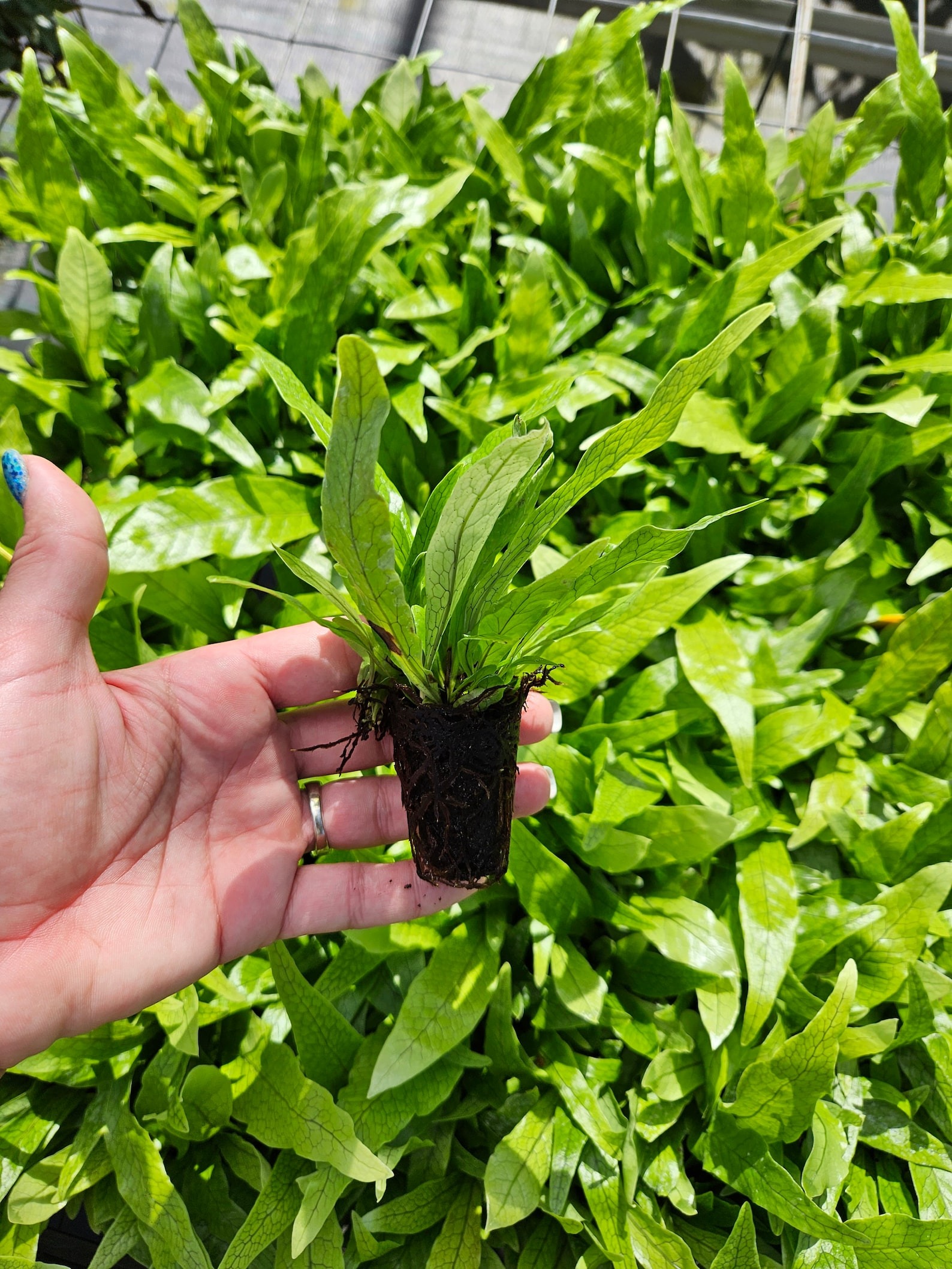
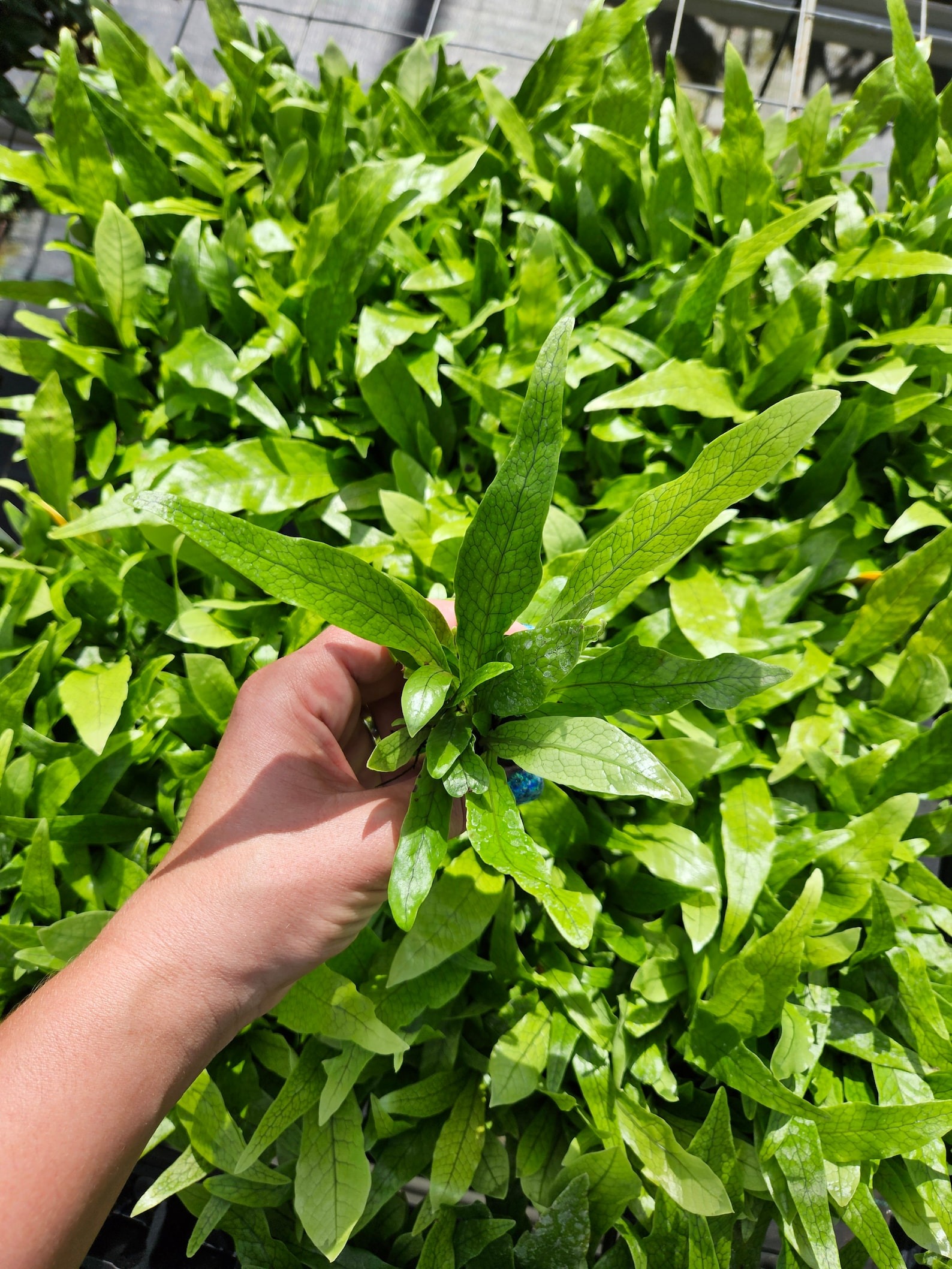
Propagating Crocodile Ferns
Crocodile Ferns can be propagated by dividing mature plants or by spore germination. Dividing established plants is simpler for beginners. Here’s a step-by-step guide:
What You’ll Need
- Sharp, clean shears or knife
- Potting mix
- Planter pots
Step-By-Step Guide
- Step 1: Gently remove the fern from its pot and loosen the root ball with your hands. Use a knife or shears to divide the root mass into smaller sections.
- Step 2: Ensure each divided section has plenty of healthy roots and some fronds. Trim any dead roots or leaves.
- Step 3: Plant the divisions in pots using a fresh, well-draining potting mix suitable for ferns. Place at the same soil depth as before.
- Step 4: Water thoroughly after planting and place in a warm, humid location filtered from direct sun. Mist frequently while new roots are established.
- Step 5: Transition to normal Crocodile Fern care once new growth appears. Repot into larger containers as the ferns become rootbound.
It can take several months before newly propagated Crocodile Ferns reach maturity and achieve their full size. But this simple technique allows you to easily multiply your plant collection!
Potting and Repotting Crocodile Fern
Due to its slow growth rate, Crocodile Fern won’t need frequent repotting. Repot every 2-3 years in early spring, or whenever the roots have filled the container. Follow these tips when moving your fern to a larger pot:
- Choose a container 1-2 inches wider than the current pot, with drainage holes.
- Carefully remove the root ball and loosen tangled roots.
- Trim off any dead roots before repotting.
- Use fresh potting mix and replant at the same depth as before.
- Water well after repotting, allowing excess water to drain fully.
Avoid burying the rhizomes too deeply, as Crocodile Fern has a shallow root structure. With a roomy new container filled with nutrient-rich soil, your fern will establish quickly for healthy new growth.
Common Problems With Crocodile Fern
When provided with proper care, Crocodile Ferns are relatively trouble-free. But there are a few potential problems to watch for:
- Crispy brown leaf tips indicate low humidity. Increase moisture levels through misting, pebble trays, or relocating to a more humid room.
- Yellowing fronds usually signal overwatering issues leading to root rot. Allow the soil to dry out further between waterings.
- Drooping fronds can mean too little water. Check whether the potting mix is drying out too rapidly, then water more frequently.
- Leaf scorch is caused by too much direct sun. Move the plant to a shadier spot.
FAQs
Crocodile ferns purify indoor air by removing toxins like formaldehyde, xylene, and toluene. Their lush tropical foliage also helps increase humidity. Plus, they add visual interest with uniquely textured leaves.
No, Crocodile Fern is non-toxic to humans and pets, making it a safe choice for homes with children or animals.
Blackened, mushy fronds result from overwatering or excessive moisture leading to stem and root rot. Improve drainage and allow more time between waterings to prevent further rotting. Remove damaged tissue to help healthy growth recover.
Yes! Ferns naturally filter contaminants through their root systems as they take up moisture, improving water quality. This makes them helpful companions when planted around backyard ponds or water features.
